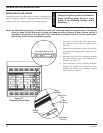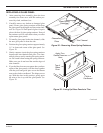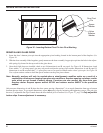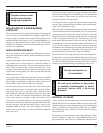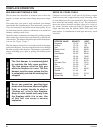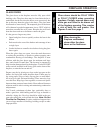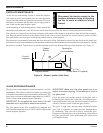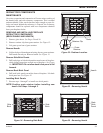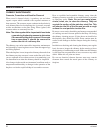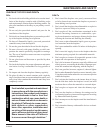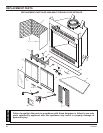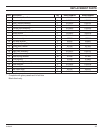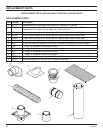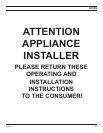
32 61D0087
CHIMNEY MAINTENANCE
Creosote, Formation and Need for Removal
When wood is burned slowly, it produces tar and other
organic vapors which combine with expelled moisture to
form creosote. The creosote vapors condense in the relatively
cool chimney flue of a slow-burning fire. As a result, creosote
residue accumulates on the flue lining. When ignited, this
creosote makes an extremely hot fire.
Note: The chimney should be inspected at least twice
a year during the heating season to determine
if a creosote buildup has occurred. If creosote
has accumulated it should be removed to
reduce the risk of a chimney fire.
The chimney cap can be removed for inspection, maintenance
and cleaning by removing three screws from the support legs
and lifting upward.
When the fireplace is new, inspect the chimney often and clean
the chimney any time creosote is seen on the flue walls. Once
you see a pattern of how often creosote is accumulating, you
can determine how often the chimney should be inspected.
Also changes in the outside environmental conditions such as
temperature and humidity or changes in the operation of the
fireplace can lead to rapid buildup of soot and/or creosote.
Have a a qualified and reputable chimney sweep clean the
chimney or remove creosote or soot with brushes on wooden
or fiberglass poles. Note: Do not use metal pipes,
chains, wires, etc., to clean the chimney. They can
scratch the surface of the stainless steel flue. This
will shorten the life of the flue and provide a rough
surface for soot particles to attach to.
Be sure to cover nearby furnishing and arrange some method
of catching soot and creosote particles that may fall during
the chimney cleaning process. If glass doors are installed on
the fireplace, they should be closed. Extra caution must be
used to avoid damage to the flue damper during the cleaning
process.
In addition to checking and cleaning the chimney on a regular
basis, be sure to inspect the chimney before starting a fire at
the beginning of each heating season. Make sure the chimney
is clear from any accumulation of soot, creosote or any other
debris. Make sure all joints are intact.
Do not use chemical cleaners because some may contain
elements that corrode the metal parts of the chimney or
fireplace.
MAINTENANCE



